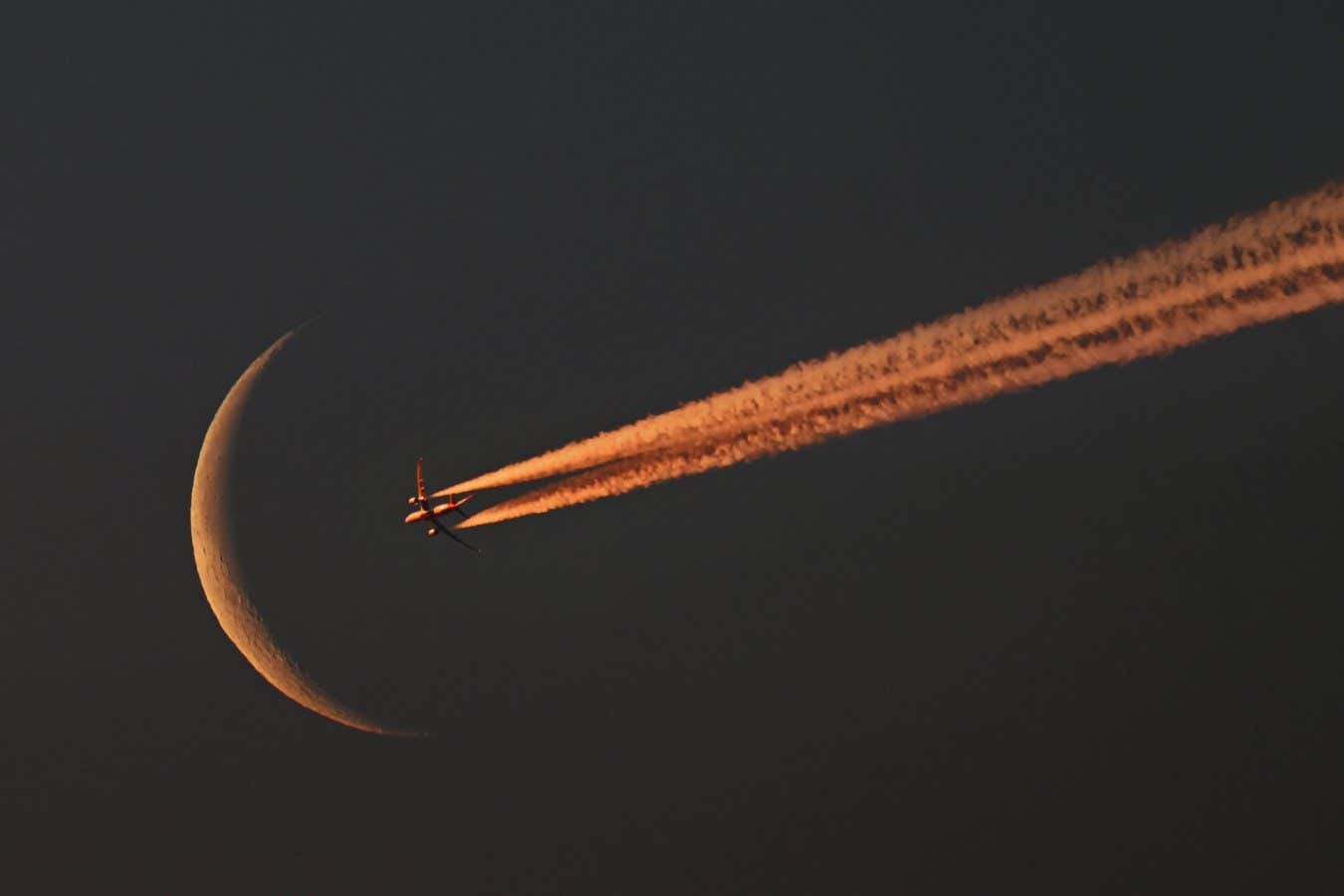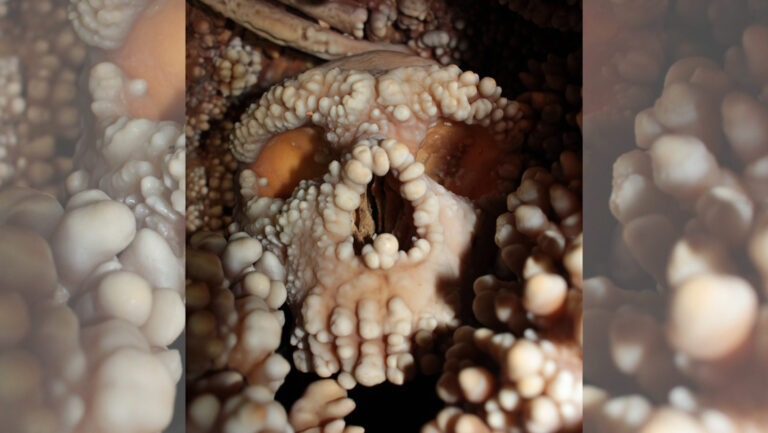

“Everybody knows flying is bad for the climate…”
oversnap/Getty Images
Many years ago, I went to report on a climate science meeting at University College London. I have no memory of what the meeting was about, but I do remember a lot else about that day. When I arrived, there were protesters outside – not unusual for a meeting about climate change, which in those days tended to attract both activists and deniers.
On this occasion, the protesters were peaceful; I ignored them and went in. About halfway through the morning, they got into the lecture theatre and started heckling the speaker. Then they invaded the stage, shouting slogans and waving placards.
They were a breed of protester I hadn’t encountered before – not climate change activists or deniers, but adherents to a conspiracy theory called chemtrails. This, in a nutshell, alleges that the condensation trails, or contrails, left by high-flying aircraft contain chemical or biological agents, deliberately released by bad actors to control the weather, poison the populace or facilitate some other evil purpose.
They aren’t. Contrails are long, thin ribbons of ice crystals generated when water vapour in engine exhaust freezes in the frigid air at the cruising altitude of commercial aircraft. They usually dissipate quickly, but under certain atmospheric conditions they can persist for hours, forming contrail cirrus clouds. These are what conspiracists call chemtrails.
Like all good conspiracy theories, the concept contains a seed of truth. Contrails may look eerily beautiful on a summer’s evening, but they are quietly harming the environment.
Everybody knows flying is bad for the climate: burning aviation fuel accounts for about 2.5 per cent of humanity’s total greenhouse gas emissions. But contrails and contrail cirrus clouds – classed as “aviation non-CO2 climate effects” – are probably as bad, if not worse.
That’s down to simple physics. Like greenhouse gases, the ice crystals in cirrus clouds trap infrared radiation travelling away from Earth into the atmosphere, creating a warming effect. They also reflect incoming sunlight, which has the opposite effect. But on balance, they cause warming.
The truth is that we just don’t know the full impact of contrails. Last year, in recognition of this gap in our knowledge, NASA asked the US National Academies of Sciences, Engineering, and Medicine to come up with a research strategy to better understand and deal with the climate impacts of contrails.
“
Contrails may look eerily beautiful on a summer’s evening, but they are quietly harming the environment
“
Published last month, its report revealed that contrails contribute to warming to an extent that may exceed the impact of aviation fuel (though there is a lot of uncertainty in the figures). Happily, it found ways to mitigate its effects, such as changing fuel composition and engine design or rerouting flights to avoid areas where contrails consolidate into cirrus clouds.
The report makes no mention of chemtrails, which is understandable. I suspect the expert panel was tempted to slap down this baseless conspiracy theory but decided not to give it the oxygen of publicity. Either way, the report probably won’t make a jot of difference, at least under the current US administration. Donald Trump and his team are anti-science, conspiracy-minded climate deniers. Dealing with contrails is hardly going to be on their to-do list. For one thing, it will require restrictions on the aviation and fossil fuel industries, so don’t hold your breath.
Indeed, I suspect the aviation and fossil fuel industries are quietly happy for the chemtrail fanatics to continue their quixotic ravings, as they provide a welcome distraction from a real issue – the climate impact of contrails.
If anything, the report will be shelved and a new one ordered – on chemtrails. Trump’s health and human services secretary, Robert F. Kennedy Jr, has reportedly been flirting with the conspiracy as part of his unscientific “make America healthy again” programme. And the concept is definitely still out there, despite – because of? – the total lack of evidence.
Earlier this year, I exchanged pleasantries with a neighbour on a sunny afternoon. Nice day, I said. It would be, he replied, if it weren’t for those, and pointed at the sky. It was criss-crossed with contrails. He is also a climate change denier.
That’s the maddening thing about the chemtrail conspiracy – it is utterly counterproductive. Despite their scientific illiteracy, I do believe chemtrail conspiracists have something going for them: they are rightly wary of corporate and government power and care about the environment and human well-being. All their efforts achieve, however, is to suck energy from legitimate protest and misdirect it at a pie in the sky.
The meeting at UCL was abandoned in the face of implacable protests. If the perpetrators thought they scored a victory, they were wrong. Climate change is an existential threat – chemtrails don’t exist.
What I’m reading
What We Can Know by Ian McEwan.
What I’m watching
The Hack on ITV.
What I’m working on
I’ve just had surgery for a hernia, so I’m working on not rupturing my stitches.
Topics:
- environment /
- climate change



